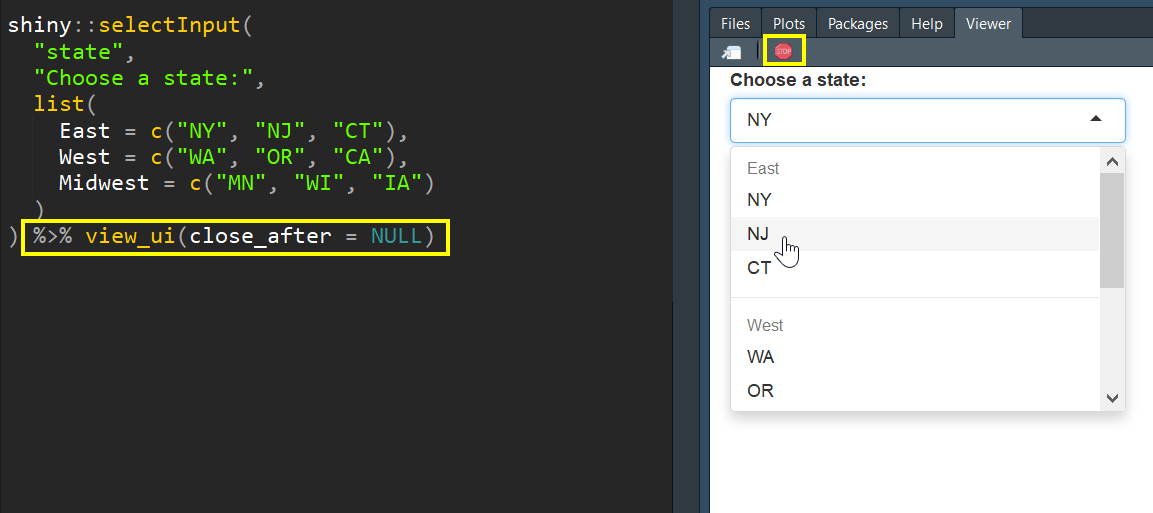Troubleshooting reactive data in a shiny app or flexdashboard can be difficult. The goal of this package is to simulate the reactive environment that is created when you launch your app without having to actually run the app. It is the hope that this will save you time and allow you to itterate more quickly. The package converts reactive data frames into functions that will read from your raw data and become available in your global environment. The main function will also recommended that you put a create dummy_input in your script or just input in a flexdashboard to simulate the reactive inputs. You can learn more about dummy input lists in this vignette. There is also a function to view your UI elemnts in the viewer pane (see below).
Installation
You can install the development version from GitHub with:
# install.packages("devtools")
devtools::install_github("rjake/shinysim")Usage
There is a dummy flexdashboard available when the package is installed for you to see how this works.
library(shinysim)
system.file(package = "shinysim", "Rmd/test_dashboard_no_inputs.Rmd") %>%
load_reactive_objects()This will result in the following output
Here are the inputs you have listed:
input_name times_used lines missing
1 displ 1 45 TRUE
2 year 2 48,49 TRUE
Add this code chunk to your Rmd:
```{r input_demo, eval = FALSE}
input <- list(
displ = "",
year = ""
)
```
WARNING: This next step will load all object assignments into your global environment.
Do you want to continue?
1: Yes
2: NoHitting 1 will then update your global environment with all raw data and assignments, your dummy input list, and all reactive objects converted to functions. As functions, the code will keep all the data manipulation and reference your dummy input list. Note: this function does not change your files; the manipulation happens within the function.
There are additional arguments you can use to resart R or to clear the environment. The keep argument takes a regular expression as the pattern match. To get an exact match, use the ^ and $ to signify the beginning and end (ex. ^your_text$). To list objects, separate them with a |. as shown below.
load_reactive_objects(
...,
clear_environment = TRUE,
keep = "test_|^df$|raw_data", # objects to keep
)The package also has a function to view UI elements in one of two ways:
shiny::selectInput(
"state",
"Choose a state:",
list(
East = c("NY", "NJ", "CT"),
West = c("WA", "OR", "CA"),
Midwest = c("MN", "WI", "IA")
)
)
# the output will automatically be used here
view_ui()You can also pipe it
shiny::selectInput(
"state",
"Choose a state:",
list(
East = c("NY", "NJ", "CT"),
West = c("WA", "OR", "CA"),
Midwest = c("MN", "WI", "IA")
)
) %>% view_ui(close_after = NULL)Note that close_after is set to NULL in this example. The view_ui() function launches an app and defualts to closing after 5 seconds. You can adjusts how long it runs or use NULL and stop it manually by using the stop sign.:red_circle:
